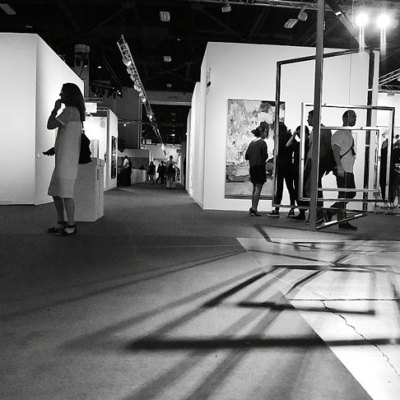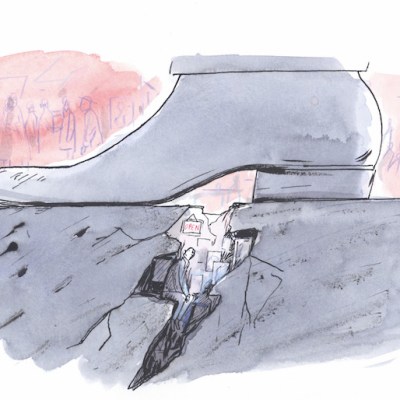Since rising from the ashes of the Grosvenor House Art & Antiques Fair in 2010, Masterpiece London (28 June–4 July) has had little difficulty in establishing itself as one of the finest cross-disciplinary art fairs in the world. Rid of its early predisposition for extravagant style and branded luxury goods, Masterpiece has flourished to become an event that embraces connoisseurship and promises artistic discoveries every year.
The layout of the fair, with its carefully weighted balance of disciplines, offers visitors a welcome opportunity to discover museum-quality pieces spanning millennia and media. ‘You can’t come across so much of this work in the public domain because there are very few dealers [with galleries] on the ground floor these days,’ explains Masterpiece chairman Philip Hewat-Jaboor. ‘We give our visitors the opportunity to discover works of art they might not be familiar with.’ Judging by record sales and the attendance of 44,000 visitors in 2017, it seems that the fair’s strategy is working.
Head of Dionysos (1st century BC–1st century AD), Roman. Galerie Chenel (€280,000)

Indeed, Hewat-Jaboor envisages this year’s edition of Masterpiece will be the strongest to date. Since its acquisition last November by MCH Group, which now holds a 67.5 per cent majority stake, the fair has expanded in size and scope. Its new cruciform layout, which allows for an additional central aisle running east to west, will allow for more exhibitors and should help to improve visitor flow. Of this year’s 160 exhibitors, up from last year’s 153, about 40 per cent hail from abroad. Among the 24 newcomers are well-known international names including Hauser & Wirth, New York-based Hammer Galleries and antiquities specialist ArtAncient.
Costas Paraskevaides, director of ArtAncient, describes the gallery’s decision to exhibit at Masterpiece as ‘an easy choice’: ‘It’s a well-presented, beautiful fair and a lot of our clients already like it,’ he explains. The ArtAncient stand will comprise an exciting display of natural history contrasted with ancient art, in keeping with Paraskevaides’s ambition at art fairs ‘to create beautiful, immersive experiences [that will] blow people away’. Central to the presentation will be a rare ‘shooting star’ meteorite found in North Africa, formed during the early solar system, around 4.6 billion years ago.
Design specialists Rose Uniacke, Axel Vervoordt and David Gill Gallery are among the exhibitors pairing art and design from a range of eras in new and interesting ways. David Gill will partially reconstruct an interior from the home of Surrealist patron Edward James. Gill explains that the inspiration for booth came from the dispersal of much of James’s eclectic personal collection after his death in 1984. By juxtaposing contemporary design pieces with older pieces, including a pair of bookshelves once owned by James, Gill hopes ‘to create a sense of curiosity’ in fair visitors. Among the contemporary pieces is a striking armchair by Mattia Bonetti, upholstered in eye-catching millennial pink and pea-green linen with silk satin appliqué.
Elle & Lui armchair (2017), Mattia Bonetti. David Gill Gallery (£42,000)

‘Thoughtful juxtaposition allows one to encounter beautiful works of art and have one’s eyes opened to the unfamiliar,’ explains Hewat-Jaboor. As the challenge to stay fresh and relevant intensifies year on year, ‘it’s very important that we keep the fair moving forwards.’ Masterpiece Presents, launched last year as a dedicated exhibition space at the fair’s entrance to promote innovative work, is a case in point. Last year, Iván Navarro’s neon installation, Impenetrable Room (2016), inaugurated the project with great success. ‘It raised awareness of the great breadth [of art], including contemporary art, that we have at Masterpiece, and I think that served to bring in a slightly different, probably younger generation,’ says Hewat-Jaboor. This year visitors will be welcomed by a new work by Marina Abramović. Created over the last five years, Five Stages of Maya Dance comprises five portraits of the artist; carved into alabaster (using a CNC milling machine that reads digitally converted photographs), they are backlit to create dramatic images of Abramović’s face in states of extreme emotion. ‘It’s an extraordinary work,’ says Hewat-Jaboor. ‘As you walk around them, the portraits morph into Chinese ink landscapes.’
Five Stages of Maya Dance (2018), Marina Abramovic. Factum Arte and Lisson Gallery at Masterpiece Presents

Elsewhere, there’s everything from a diamond encrusted art deco bracelet by Cartier (c. 1928), courtesy of Simon Teakle Fine Jewelry, to a Roman marble bust of Dionysos (1st century BC–1st century AD, at the stand of Paris-based Galerie Chenel. Modern British art can be found with Masterpiece stalwarts, Osborne Samuel and Offer Waterman, while London-based picture dealer Stair Sainty Gallery returns with a portrait of Berthe Morisot on a divan by Édouard Manet, dating to 1873. Richard Green’s stand takes the ‘Best of British’ as its theme, presenting works spanning three centuries. Central to the display are an exquisite Turner watercolour over pencil of Malmesbury Abbey, dating to 1827, and L.S. Lowry’s Lytham Pier (1945). Lowry’s joyous composition of carefree figures playing, strolling and running about on the undulating dunes of the Lancashire coast encapsulates the sense of freedom and optimism that seaside resorts would come to afford British holidaymakers in post-war Britain.
Lytham Pier (1945), Laurence Stephen Lowry. Richard Green (POA)

For its Masterpiece debut, Montreal-based Landau Fine Art brings a unique black marble Henry Moore sculpture of a reclining nude from 1977, and the extraordinary Bride and Groom (1915–16), one of only two double portraits in oil painted by Amedeo Modigliani. Depicted in a subdued palette of blacks, beiges and dusky pinks, the newlywed couple gaze at the viewer; with their almond-shaped eyes and swan-like necks, they boast the trademark features of Modigliani’s mature portraits. Donated to the Museum of Modern Art in 1942 by American artist and collector Frederic Clay Bartlett, the portrait remained in MoMA’s collection until it was deaccessioned and sold to the Landau family 15 years ago.
Bride and Groom (1915–16), Amedeo Modigliani. Landau Fine Art ($35m)

As for decorative arts, the tercentenary of Thomas Chippendale’s birth is the occasion for English furniture specialist Ronald Phillips to bring around 25 Chippendale pieces to the fair, stockpiled over the last 10 years. Among the most significant are a pair of giltwood settees made for Brocket Hall in Hertfordshire and a George III ormolu-mounted satinwood commode of around 1770–72, made for Harewood House near Leeds. Simon Phillips, one of the founders of Masterpiece and director of Ronald Phillips, sees the fair as a fantastic venue for a major display of this kind. ‘There is certainly an appetite for the very best [English furniture] and, hopefully, especially pieces by Chippendale’, explains Phillips. And as ‘it’s the best fair in the world selling English furniture,’ he adds, ‘I am quietly confident for a wonderfully successful Masterpiece.’
Serpentine commode (c. 1770–72), Thomas Chippendale. Ronald Phillips Ltd (£500,000+)

While sales are paramount to the success of Masterpiece, so is the wider experience that the fair provides. With a mentor scheme for young industry specialists, a comprehensive lecture series, top-notch food courtesy of Urban Caprice and a roster of multi-disciplinary dealers eager to share their passion and knowledge, Masterpiece offers a great breadth of possibilities. ‘We’re breaking down barriers and making people understand how to live with works of art, how to be relaxed with them, how not to be afraid, in a way,’ explains Hewat-Jaboor. ‘We are working really hard to nurture the next generation of scholars, be they vetters, dealers, or collectors. We have a wonderful opportunity as a multi-disciplinary fair to do this, and I think that really makes us unique.’
Masterpiece London takes places in the South Grounds of the Royal Hospital Chelsea from 28 June–4 July (www.masterpiecefair.com).
From the June issue of Apollo. Preview and subscribe here.



